You’ve seen in the news how criminals are getting fearless and how break-ins are becoming a common occurrence. Seeing how things are unfolding and hearing stories from neighbors and friends about unpleasant encounters with the criminal element are probably the main reasons you decide to get a firearm.
You are one step closer to keeping your family safe, but you still have to decide if you should go with a handgun, automatic rifle, or shotgun. You ask around, and you notice that everyone has a strong opinion regarding one of the three weapon systems, and even if the final choice is yours, there are still some questions you need to ask yourself. So before you ask your gun supplier which firearm he recommends, you should do a little bit of research on your own.
The weapon system you use can make the difference between life and death during a home invasion. Each firearm has advantages and disadvantages in your home environment, and we should look into this before you decide what gun you’ll get.
Accessibility
A good home defense firearm needs to be readily available to do its job. So you can imagine that from all three weapon systems named above, the handgun is the most accessible of them all during a situation when you may have to face a lethal encounter.
You could store your loaded handgun on your nightstand in a lockbox or in one of those household items that conceal the presence of a gun (like a tissue box with a hidden gun compartment). Then, your handgun would be in reach when you need it the most. Even more, you can store it anywhere in your home without significant issues.
A loaded shotgun or rifle, on the other hand, needs to be stored in a safe, or at least that’s what any responsible gun owner should do. This means you would need time to get it, and in certain situations, you may not have that luxury. Even more, keeping your long guns around your house during your daily routine is cumbersome, and your family members may get uneasy. On the other hand, you can carry your handgun on you at all times.
The same goes for ammunition, and it’s much easier to handle this issue when it comes to handguns due to the size of the rounds and the magazines’ size. So you can carry extra ammunition (and you’ll probably have to) on you without any issues.
Considering the reasonably limited capacity of a hand’s gun magazine compared to most automatic rifles that have approximately 30 rounds, you should consider keeping an extra magazine or two for your handgun on you at all times.
As for shotgun rounds, the ammunition limitations need to be addressed since the rounds are heavy and bulky. In addition, these firearms have a limited magazine capacity of approximately six rounds, and they are much more time-consuming to load compared to the other two weapon systems.
And when we talk about firearms accessibility in a home defense scenario, we also have to include the other family members in the big picture. So the user-friendliness of the firearm you chose for home defense is an important aspect you have to keep in mind since you probably won’t be home all the time.
In that case, other family members will be in charge of protecting the fort. Seeing that everyone is different in strength and physical abilities, you can understand how user-friendliness plays an essential role in operating a firearm.
Since handguns are the smallest and lightest of the three weapon systems, these make them a better choice for sharing between family members who have different body types and are less physical in their daily lives.
Maneuverability and functionality
Handguns are the easiest to maneuver in an environment where doors and doorways, small rooms, tight corners, nooks, staircase, and furniture are ever-present problems. Moreover, handguns are the easiest weapon system to wield when such obstacles are an obstruction. Even more, it’s much easier to retract a handgun compared to a long gun to prevent a gun grab.
Another strong point of handguns is the owner’s ability to operate them using one hand. This gives him advantages like calling 911, opening doors, carrying a flashlight, or even assist family members in case needed. Even if one of your arms gets injured, you will still operate the handgun without significant drawbacks. You can imagine that it wouldn’t be so efficiently using a shotgun or an automatic rifle with only one functioning arm.
Distance also plays a key role when sighting in on an assailant, and it’s much easier doing so with a handgun at close range. However, rifles are more accurate than any handgun when distance is involved. Only lots of hours at the range can fix this weakness. When sighting using a gun, one thing to keep in mind is that specific scopes can inhibit your close-range sighting abilities within a room.
Shotguns are hard to maneuver in small areas and, in general, are too heavy for most people. Not to mention that even if they have the best hit potential in low-light settings, the prohibitive recoil impulse makes them unfit for most folks.
When it comes to shotguns, if you decide to go with this firearm, you should consider the shot spray and how it affects the outcome of an armed confrontation, considering the load and the distance between yourself and the target. While at close range, the shot spray can be no wider than a fist; the spray will often be more comprehensive than the home intruder at a longer range.
This has two outcomes: insufficient pellets hitting the target leading to failure to incapacitate the attacker, or you could hit innocent bystanders. Both of these scenarios will lead to a tragic outcome.
The blast and recoil of each of the three weapon systems described in this article need to be considered as well. For example, most people can easily manage the recoil impulse and the blast from a handgun. However, when it comes to shotguns and rifles, there are always problems we need to acknowledge.
Firing a rifle or shotgun indoors creates a powerful blast that can stun and disorient the inhabitants finding themselves in close vicinity to the person operating the firearm. Even more, the larger the blast, the bigger the chances of hampering your night vision right when you need it the most.
Stopping power
In most cases, home invasions involve multiple opponents. When it comes to numbers working against you, stopping more than one home invader is much more difficult with a handgun than with a shotgun or rifle.
There could be more of them than there are of you, they could be spaced throughout the house, and they could constantly be moving. They have their weapons of choice ready, and they also have the element of surprise on their side. You can see how all of this creates a huge tactical advantage for your opponents.
That advantage cannot be successfully countered by a single person firing a handgun unless that person is very well trained. More precisely, stopping power comes into play in such scenarios, the round’s reliability to destroy the opponents. And here, nothing beats the trustworthiness of shotguns and rifles when it comes to home defense.
Let’s say you are proficient in using a firearm, and you’ve put in the hours at the range. Yet, even with all your training, the chances are high that you need to take several shots to stop an attacker. Even more, things such as barriers, body armor, shot placement, and even drugs come into play and have a decisive role in establishing the outcome of a confrontation.
With a rifle, the round will most certainly go through most obstacles (including people), and it will do a lot of damage. This is why in armed conflicts of the world, rifles are the main firearms of choice, and handguns are just the means to get to the rifle if one is not readily available.
That being said, there is the need to consider the over-penetration issue if you decide to go with a rifle. Some standard handgun rounds can indeed penetrate most interior doors, but when it comes to rifle rounds (depending on the round being fired), these can shoot through your opponent and walls within your home with ease. Even more, they will go through common walls between apartments, and you may hit innocent people.
Let’s look at the case where an owner uses a shotgun loaded with 00 bucks for home defense purposes. Each pull of the trigger will release nine .38 caliber pellets, but the effective range will be shorter than a handgun or rifle. Some will train using the “select slug” technique to extend that range, but not everyone can master such a drill.
As engagement goes, that 00 bucks may very well hit the head, groin, or knee areas, which may cover the body armor issue if your attacker is using such protection. People agree that even poor hits can incapacitate the attacker since severe wounds are inflicted with each shot, but as said before, the spray issue comes into play.
The best stopping power of shotgun is achieved at close range with 12-gauge buckshot, but you also have to consider that such round has the heaviest recoil impulse. Even more, statistics show that a shotgun round loses up to 70 percent of its effectiveness at 30 years (this depends on the barrel and round being used). Thus, you can see how long-range will become an issue if you don’t manage to master the special slug technique when the time comes.
Some argue that rifles and shotguns are the most intimidating in assailants’ eyes and that the sole “racking” of a shotgun is enough to deter any would-be attacker. However, I don’t think handguns should be seen as less intimidating tools of home defense. While not as visually impacting as riles and shotguns, a handgun can still deter any home opponent if used correctly.
What does that mean?
Well, anyone that has experience in dealing with firearms can tell the difference if you’ve drawn your gun ten times or hundreds of times. But, of course, posture and attitude are also factoring in your favor, so you can imagine that putting in those hours at the range will pay off in the end.
Budgeting issues
Some people consider the price factor when picking a weapon system for home defense, and budgeting issues are often present in a gun owner’s life. That being said, handguns are the least expensive option for any homeowner out there.
A budget of $500 to $800 can get you a good quality handgun regardless if you like to go with a pistol or a revolver. Shotguns are more expensive, and a good shotgun can cost you more than $1,000. As for rifles, any good quality starts at around $1,000, although cheaper deals can also be found.
Some may argue that their “gun guy” will give them a better deal than the numbers listed above, but the critical factor when buying a weapon for home defense is quality. Good quality is the way to go since it’s like buying insurance for your home. There’s no room to cheap out, and you have to be covered in every aspect when it comes to your home’s protection.
In the end, it’s your call, and after thorough research, you should be able to buy the best quality weapon you can afford.
Training becomes mandatory
Training with your weapon of choice is mandatory, and you aren’t buying a gun to lock it in a safe to get it out when the time calls for it. When it comes to training, you should know that handguns require fewer training hours than other weapon systems and are much easier to operate. Some people become outstanding and accurate with handguns, just with a minimum amount of practice.
Learning the system of a rifle as a whole will require more time even though, at first, it may seem relatively easy to aim and fire using the said rifle.
I think that shotguns are the most complex of the three when it comes to home defense training. That is because they require much more hours to be put in to exploit their full speed, power, and accuracy potential.
Leaving aside the need to learn the “select slug” technique, it is essential to acknowledge that malfunctions occur much more often with shotguns if the operator is not well trained. Adding the recoil and weight issue, plus the reloading techniques that need to be mastered, you can see why shotguns require much more training hours compared to rifles and handguns.
Concluding
After reading this article, the reader should understand that picking one or more firearms for home defense purposes is a much more complex subject than initially thought. If that’s the case, my job is done, and you should have acknowledged that this is not a decision to take lightly.
Some will go with all three weapon systems just because they can afford to do so, but in my opinion, that won’t help when the alarm goes off if you don’t know the limitation of each firearm you are wielding and if you didn’t put in the training hours.
Also, you should read Simple Gun Hacks That Will Instantly Double Your Accuracy from Decorated Green Beret!


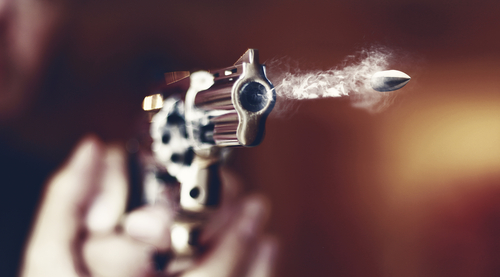

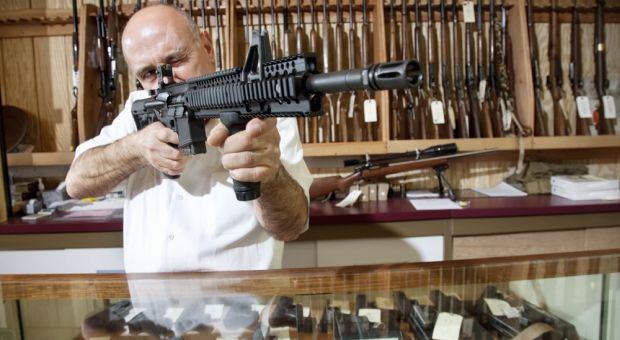
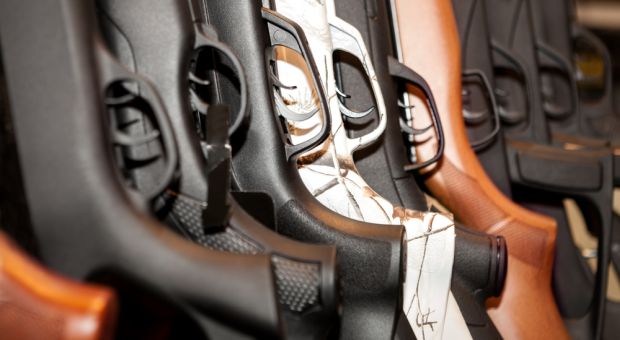
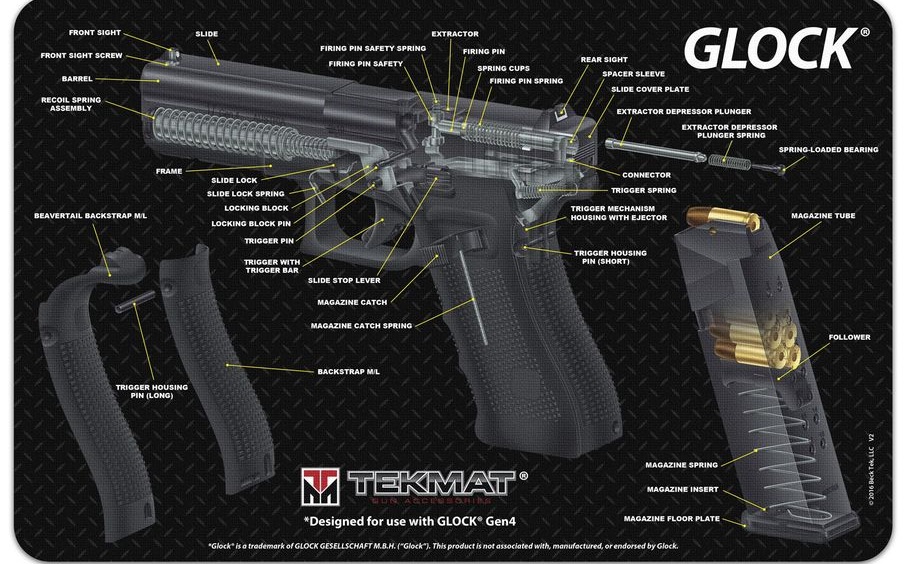


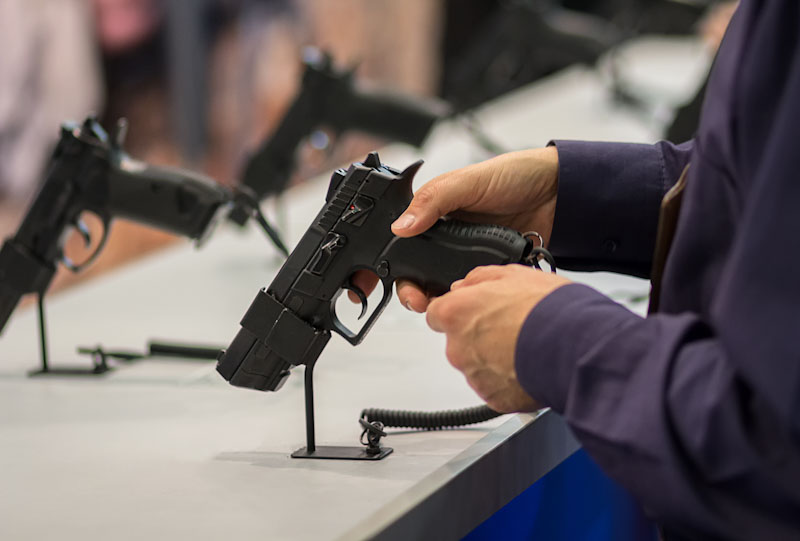
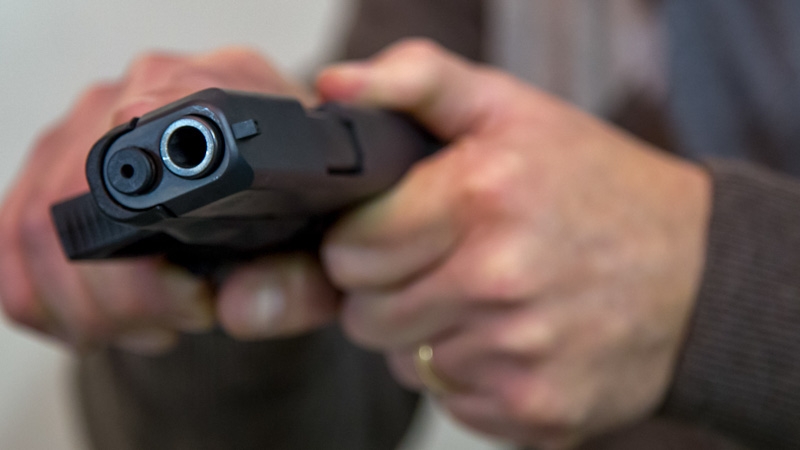
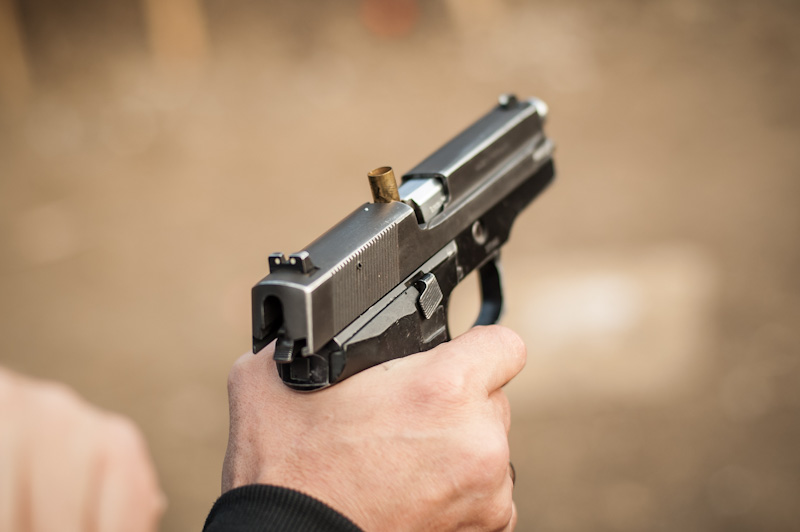

JC Hickory | June 6, 2021
|
I wish this article covered the legality of defending ones home. I live in a small town, and chose as my primary defensive weapon, a Maverick 88 12ga, 18 1/2 inch barrel with a pistol grip. I grew up using a similar firearm, and am fairly proficient with it. I shoot trap with this quite well. I have chosen this for a few reasons. First off, most people during a break in situation will be shaking like a leaf. It’s very difficult to hit a target that way with a single projectile no matter how much you train. Secondly, I do not have to aim. Just like I use it shooting trap, point and pull. You mentioned body armor, but I’m more inclined to remove knee caps with this. This article says that a good shotgun runs at around $1000. This is laughable. The Mossberg Maverick 88 was when I purchased it under $200 and shows up on almost all the top shotgun lists I’ve seen online. It’s toward the bottom of the list, but it’s on there. If this is not enough, I have my EDC on my night stand, an my wife has a full frame 9mm next to her. Let’s face facts with facts. Most intruders are cowards, not all, but most. One must also consider the circumstances of your home. Do you have others living with you such as children, or that bum cousin of yours. Do you live in the country with no neighbors, or in a town such as I do. Over penetration can kill, or land you in prison, or both. Remember, you and you alone are responsible for every shot you take. This is why I chose a shotgun, but do not chose buck shot. I have #6. I live in a small house, and if assailants come for my wife, or myself, they have to come down a hallway. Basically, if I’m alerted to their presence, they are in a kill box. Your layout might be different. Another thing to consider is ammo choice. If your using a handgun or a rifle, do not use full jacketed ammo.. but do consider, that your ammo choice, if you have to use a defensive firearm, will be scrutinized by the judicial system. This is one reason I do not chose buck shot. Also, depending on state, or local law, you are not at liberty to use deadly force to protect property. Only life
Bill In Idaho | June 7, 2021
|
A Very Well thought out reply, J C. I am with you on your commentary – with two follow-up comments : I recommend a Semi-Auto 20 Ga. Using 3″ Magnum loads – containing #4 buckshot. This is a Perfect balance in power and equal to the 12 Ga. for “Knock-Down Power” – Higher velocity, just fewer pellets.
Phntom30 | June 6, 2021
|
Yes, you are right, close range pattern of a shotgun is like size of your fist. Effect is chunking. It takes a chuck out of an intruder. Best home defense system I have found is Black Aces Tactical Bullpup, magazine feed semi-auto 12ga. It has an 18” barrel yet is only 28” long overall so you have indoor maneuverability. Magazines are 20 round heavy bulky drum, and versatile 10 and 5 round stick magazines. They reload just like and AR with bolt holdback and magazine release features. Fast like John Wick with a pistol. As for recoil, yes it recoils but the pistol grip shares the recoil with vertical fore grip. These two can take the majority of the recoil thru the arms without every raising the weapon to a cheek weld or shoulder. Aiming is with a laser, usually dual green and IR. IR of course assumes you have NVGs.
As for lethality, it is all about your ammunition choices, you have non-lethal, bird, deer, intruder, and anti-drone capabilities making the choice robust with wide range of utility. Bird shot works inside on intruders as a chunker while limiting collateral damage. Urban or suburban outdoors, #4 buckshot has the range, lethality limiting collateral damage. Rural areas, 000 buck puts lethality past 100 yards, with a spray that exceeds an HK 9mm sub-machinegun. Like an AR a 9mm 30 round magazine puts out 30 9mm 115gr bullets, the bullpup 10 round stick magazine puts out eight 9.14mm 71gr pellets from each round at higher muzzle velocity. 80 versus 30, rural, 300 versus 30 urban suburban, bullpup has more firepower.
Now for bump in the night scenario, when you have little or no reaction time, classic nightstand pistol works. Best option is Springfield XD or XDM high capacity 9mm with Sig V-crown. Tactile features are its strong points for this application. Cocked pin and bullet chambered indictors are a plus confirming readiness status without looking in the dark.
jrg | June 7, 2021
|
When I lived ub an apartment during my college years, I stored my handgun in the closet nearest the apartment entry. A pair of nails driven above the door head on the inside (you have to be inside the closet to spot it) kept it handy when answering the door. A folded newspaper in same hand to help coceal it. A simple DA S&W 1917 .45acp revolver. Mild recoil and report, the last important when fired indoors. Muzzle bore appearance large enough to impress the offender.
When it was time to sleep, I kept it on a white hand towel on the nightstand. Easier to find in the dark.
Jeff | June 7, 2021
|
Consider calling a Semi automatic just that, some confuse with Full Auto…
My thought is an AR in many cases has less recoil than a hand gun.
A name brand pump shotgun will give you more bang for your buck…under $500
tweell | June 7, 2021
|
Several inaccuracies weaken this article. First, shotguns are the cheapest weapon, unless you are cherry picking prices. Second, unless you have illegally modified the shotgun, the pattern spread is insignificant at any inside range. Third, the training needed to become proficient and maintain proficiency with handguns is higher than with rifles or shotguns.
Illini Warrior | June 7, 2021
|
if an article is published strictly in a gun forum – I have no problem with all the safety concerns and the usual BS about round penetration ect ect that impacts the everyday defense of your home …
but this is a prepper forum – the reality of using a firearm in the defense of your home in a serious SHTF and even WROL should be primely addressed – rules change – your defense needs to also – and your weapon and loadout definitely …
biggest concern I usually have between the two strategies is a totally inadequate weapon/load to take the battle outside – whatever your local laws are concerning crossing the door threshold goes out that same door when the crap flies – blasting barn door patterns out of your inside “riot gun” will get you killed eventually ….
Leam | June 7, 2021
|
Many predator incidents will likely occur within three seconds of initiation. They aren’t going to RSVP. By the fourth second, you’ll need to have already begun–or finished–your counter response. Plan and train accordingly. 1…2…3.
Max Stotto | June 8, 2021
|
Mindset and training under pressure is the key to standing any chance of surviving a home invasion encounter because if you have time to aim you probably do not need to take the shot as the bad guys will have already taken theirs! Great article by the way.
Survivormann99 | June 11, 2021
|
Whew! When I first saw the title, I thought the article was a discussion about the benefits/risks of using firearms for defense of the home instead of, say, a baseball bat.
I have a friend who refuses to buy a firearm, thinking that he will do just fine with a baseball bat. I told him that this assmes that the bad guy will come alone, or that the group of them will “step up to the plate” one at a time. Besides that, his bad knees and shoulders mean that he lost his homerun capabilities a long time ago.
I know. I know. I need to get different friends.
Raven Prepper | October 14, 2021
|
i found the comment about “locking up your rifle’s and shotguns is the right thing to do” Well that doesn’t work well for me and my family. if you have younger kids i could see that as a issue but most kids should be trained around guns and how to shoot.
i rather keep a Pistol Ar15 close by and use that as my HD rifle. Its small light and easy to use. with the sling or even one handed you can open doors and do everything you need with a handgun.
Hawkshaw | July 24, 2022
|
1. If you mean to go to the door with a machine-gun, OK, but if you mean semi-automatic rifle, then refer to it as semi-automatic.
2. There is no one single best weapon. It comes down to what you own, or willing to buy, and becoming proficient with it.
3. Shotguns do not “clear an entire room with one shot. Across an average sized bedroom the shot pattern is about the size of your fist. And yes, you need to aim a shotgun.
4. If your friend is afraid of guns, take him or her to the range and show them what fun shooting can be.